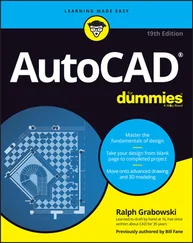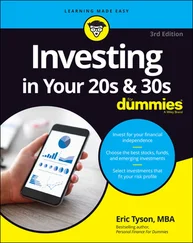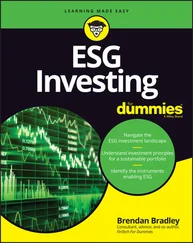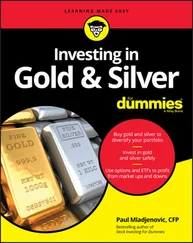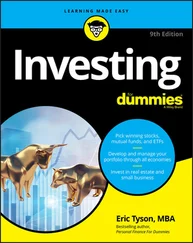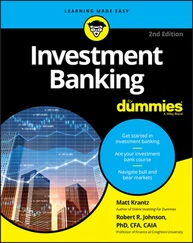Ralph R. Roberts - Foreclosure Investing For Dummies
Здесь есть возможность читать онлайн «Ralph R. Roberts - Foreclosure Investing For Dummies» — ознакомительный отрывок электронной книги совершенно бесплатно, а после прочтения отрывка купить полную версию. В некоторых случаях можно слушать аудио, скачать через торрент в формате fb2 и присутствует краткое содержание. Жанр: unrecognised, на английском языке. Описание произведения, (предисловие) а так же отзывы посетителей доступны на портале библиотеки ЛибКат.
- Название:Foreclosure Investing For Dummies
- Автор:
- Жанр:
- Год:неизвестен
- ISBN:нет данных
- Рейтинг книги:5 / 5. Голосов: 1
-
Избранное:Добавить в избранное
- Отзывы:
-
Ваша оценка:
- 100
- 1
- 2
- 3
- 4
- 5
Foreclosure Investing For Dummies: краткое содержание, описание и аннотация
Предлагаем к чтению аннотацию, описание, краткое содержание или предисловие (зависит от того, что написал сам автор книги «Foreclosure Investing For Dummies»). Если вы не нашли необходимую информацию о книге — напишите в комментариях, мы постараемся отыскать её.
Foreclosure Investing For Dummies,
Foreclosure Investing For Dummies,
Foreclosure Investing For Dummies — читать онлайн ознакомительный отрывок
Ниже представлен текст книги, разбитый по страницам. Система сохранения места последней прочитанной страницы, позволяет с удобством читать онлайн бесплатно книгу «Foreclosure Investing For Dummies», без необходимости каждый раз заново искать на чём Вы остановились. Поставьте закладку, и сможете в любой момент перейти на страницу, на которой закончили чтение.
Интервал:
Закладка:
Thorough research requires you to dig up the following essential information:
Names of the homeowners
Amount owed on the property
Lienholder names and contact information
Physical condition of the property
Homeowners’ current situations and motivations
Market value of the property
The following sections introduce you to the types of research to perform as part of your due diligence, but proper research requires much more than I can cover in this chapter. For additional details, see chapter 8.
Investigating the property’s title and other documentation
Before you commit to purchasing a property, you need to know who really owns it, how much the current owners owe on it, to whom they owe the money, how much they owe (if anything) in back taxes, and whether the property has any encumbrances (liens, judgments, or zoning restrictions). In short, you need to know what you’re getting yourself into before you get yourself into it.
Fortunately, most of the following critical documentation about a property is publicly and easily accessible if you’re working with a title company (which I recommend):
Title: The title shows the names of the property owners and lienholders and any legal judgments on the property. I once purchased a property from a mother and daughter, only to discover later that the daughter from whom I bought the property wasn’t the daughter who owned it. The owner daughter eventually took possession of the property, and I was left with some nasty, time-consuming legal battles. By checking the title, you can avoid similar mistakes.
Title history: A title company can provide you with a title history that shows the change of ownership over the years. In some cases, this history reveals gaps in the transfer of the property from one homeowner to the next. A gap in the history may be a warning that someone else can lay claim to the property later and take you to court.
Property history: Your town or city keeps a history of every property, including all building permits issued on the property. If the property has an additional structure that was built without a permit, it may not have been built to code. Any information you can gather about the history of the property can assist you later in evaluating its market value and spotting any red flags.
 Never purchase a property without fully researching its title and any other public documents recorded on that property. In Chapter 8, I guide you through the process of researching a property and assembling a detailed dossier, which is essential for making sound investment decisions.
Never purchase a property without fully researching its title and any other public documents recorded on that property. In Chapter 8, I guide you through the process of researching a property and assembling a detailed dossier, which is essential for making sound investment decisions.
Inspecting the property with your own eyes
Tattoo the following message on your forehead: My eyes, or no buys. You can look at the title work and other property documents until your eyes cross, but you don’t know the condition of the property unless you see it for yourself. I recommend that you do the following:
Visit the property and the neighborhood it’s in. Never try to assess the value of a property in a vacuum. The condition of the neighborhood affects the sale price.
Walk around the property and inspect it from all four sides. The front of the house can look like the Taj Mahal while the back or sides look more like a bombed-out bunker. See Chapter 8for additional suggestions on doing drive-by and walk-around inspections.
If possible, get inside and look around. You don’t want to get arrested for trespassing or run off by an angry homeowner, but if the homeowner invites you in, accept the invitation.
 If the house is currently listed with a broker, make an appointment to view it. This approach is an excellent way to get the inside scoop without being accused of trespassing or voyeurism! You don’t have to tell the broker what you know about the property, why you’re interested in it, or anything else that might increase the asking price.
If the house is currently listed with a broker, make an appointment to view it. This approach is an excellent way to get the inside scoop without being accused of trespassing or voyeurism! You don’t have to tell the broker what you know about the property, why you’re interested in it, or anything else that might increase the asking price.
See Chapter 8for more tips on inspecting the property with your own two eyes.
 This cursory inspection offers you only a glimpse of the property, and in foreclosure investing, that’s all you get sometimes, especially if you're buying the property at an auction. When buying a property directly from the homeowners before auction, make your offer conditional upon a satisfactory inspection, and have the property professionally inspected before closing. This inspection will uncover any costly defects and give you a ballpark estimate of the cost of repairs and renovations needed to bring the property up to market value. If the property requires repairs, try to negotiate a price reduction instead of canceling the deal. If the estimated cost of repairs is $5,000, for example, try to get a reduction of $6,000.
This cursory inspection offers you only a glimpse of the property, and in foreclosure investing, that’s all you get sometimes, especially if you're buying the property at an auction. When buying a property directly from the homeowners before auction, make your offer conditional upon a satisfactory inspection, and have the property professionally inspected before closing. This inspection will uncover any costly defects and give you a ballpark estimate of the cost of repairs and renovations needed to bring the property up to market value. If the property requires repairs, try to negotiate a price reduction instead of canceling the deal. If the estimated cost of repairs is $5,000, for example, try to get a reduction of $6,000.
Guesstimating a property's true value
An essential component of successful real estate investing is developing an exit strategy or endgame. Before you agree to pay a certain price for a property, you must have a fairly accurate estimate of what you can sell it for. Otherwise, you risk overpaying and losing money on your investment.
Estimating the market value of a house is easiest with the assistance of a real estate agent who’s knowledgeable about property values in the area. A qualified agent can pull up Multiple Listing Service (MLS) sheets on comparable homes that have recently sold in the same neighborhood and quickly provide you a good idea of how much you can sell the property for, assuming that it’s in marketable condition and the market remains relatively stable.
Don’t let your agent or the word on the street pump up your expectations or estimates. Tell your agent that you want an estimated sales price based on reality, not hope. Provide your agent as many details as possible about the property to ensure that the estimate is based on truly comparable properties.
 Never enter into a real estate deal unless you have at least two exit strategies: Plan A, typically for selling the property at a profit, and Plan B, just in case Plan A doesn’t pan out. Your Plan B may be to lease the property, live in it, or sell it for slightly less than you planned to sell it for, but you should always have a Plan B, because real estate transactions and markets aren’t always predictable.
Never enter into a real estate deal unless you have at least two exit strategies: Plan A, typically for selling the property at a profit, and Plan B, just in case Plan A doesn’t pan out. Your Plan B may be to lease the property, live in it, or sell it for slightly less than you planned to sell it for, but you should always have a Plan B, because real estate transactions and markets aren’t always predictable.
Investigating the situation and the homeowners
The more you know about the homeowners and their situation, the better able you are to assist them in extricating themselves from their current predicament. Unfortunately, homeowners who are facing foreclosure often feel isolated, ashamed, resentful, and defensive. They may not be very forthcoming about the details that landed them in their current situation, and they may see you as merely an opportunist who’s trying to sell their property out from under them.
In a way, they’re right. You do want the property, and you want to make a profit. But that doesn’t change the fact that the homeowners are trapped and need to explore their options. Your job at this stage is to convince the homeowners that they’ll see better results working with you than with someone who’s not quite on the level. In Chapter 9, I show you how to approach distressed homeowners and explain their options.
Читать дальшеИнтервал:
Закладка:
Похожие книги на «Foreclosure Investing For Dummies»
Представляем Вашему вниманию похожие книги на «Foreclosure Investing For Dummies» списком для выбора. Мы отобрали схожую по названию и смыслу литературу в надежде предоставить читателям больше вариантов отыскать новые, интересные, ещё непрочитанные произведения.
Обсуждение, отзывы о книге «Foreclosure Investing For Dummies» и просто собственные мнения читателей. Оставьте ваши комментарии, напишите, что Вы думаете о произведении, его смысле или главных героях. Укажите что конкретно понравилось, а что нет, и почему Вы так считаете.





